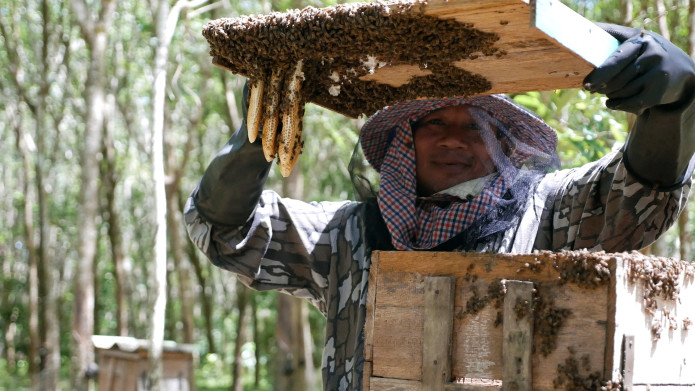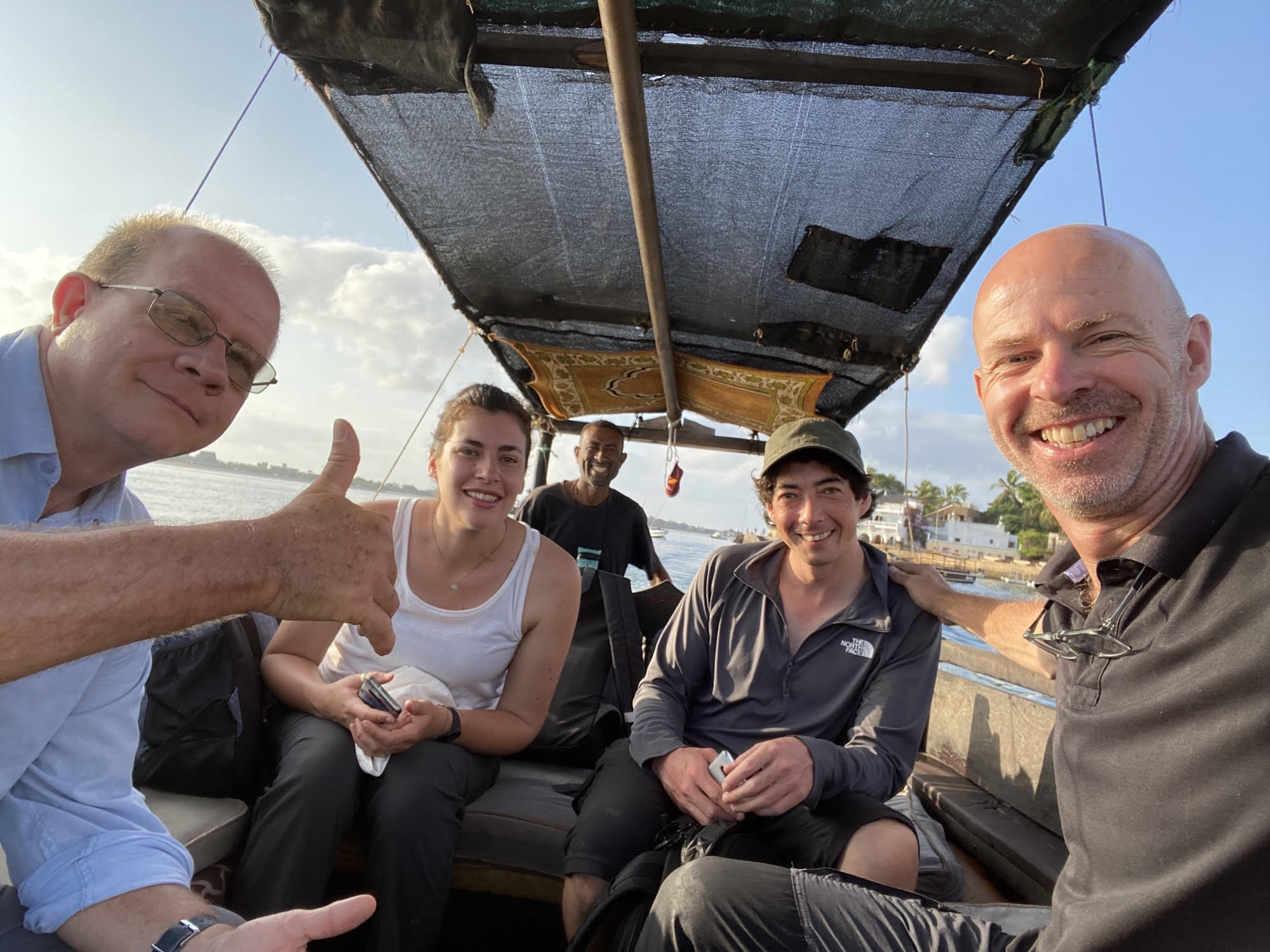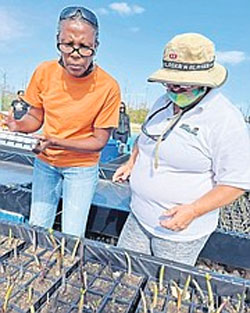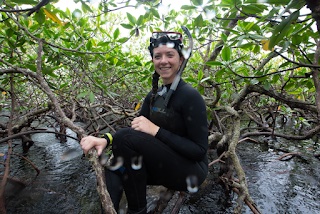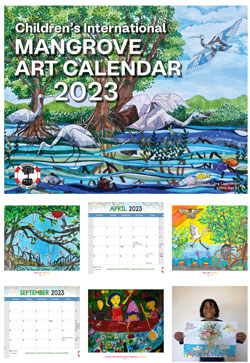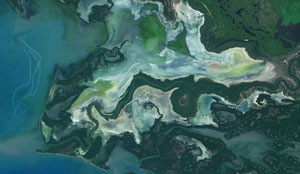MAP News Issue #562, Dec 31, 2022
The MAP News | |
2022 Year In Review We are taking a look back of some of our top stories from 2022. Over the past 12 months, we have seen some major breakthroughs and witnessed some catastrophic setbacks in mangrove conservation and protection. Since its inception 31 years ago, MAP has watched global awareness of these important habitats change dramatically. No longer do we argue for their simple conservation but rather the best method of conservation. Where we once fought to dispell the myth that these were undesireable mosquito-infested scrub-brush, we now debate which species should be reintroduced and where. Our understanding of the critical role these forests play in carbon sequestration, storm abatement and coral and seagrass protection continues to grow exponentially. The question of the value of these essential forest and the worth of some of the most biodiverse habitats is no longer in question. And yet we cannot hope the battle to save mangroves has been won. We still see vast tracts of these tropical forests sacrificed for the construction of coal-powered energy plants. Vast swaths of forest cut down and replaced with palm-oil plantations. Bullet trains, ocean reorts, shrimp supply demands , all continue to threaten the remaining mangroves. And each year, MAP will continue to be a voice of reason and hope for magrove forests and the communites that depand on them. Here are our picks for the top stories of 2022 MAP News Issue #537 – Jan 08, 2022 An Appeal from our Executive Director for the Mangroves MAP News Issue #540 – Feb 19, 2022 Man of the moment for dwindling mangrove
MAP News Issue #541 – Mar 05, 2022 Living with Bees in Thailand
MAP News Issue #542 – Mar 19, 2022 Mangrove Restoration Project in Kenya
MAP News Issue #544 – April 16, 2022 Learning How To Restore Mangrove Population
MAP News Issue #546 – May 13, 2022Children’s Mangrove Calendar Art Contest 2022 MAP News Issue #549 – June 25, 2022 Co-existing mangrove-coral habitats have a new global classification system MAP News Issue #551 – July 30, 2022Rare freshwater mangroves discovered 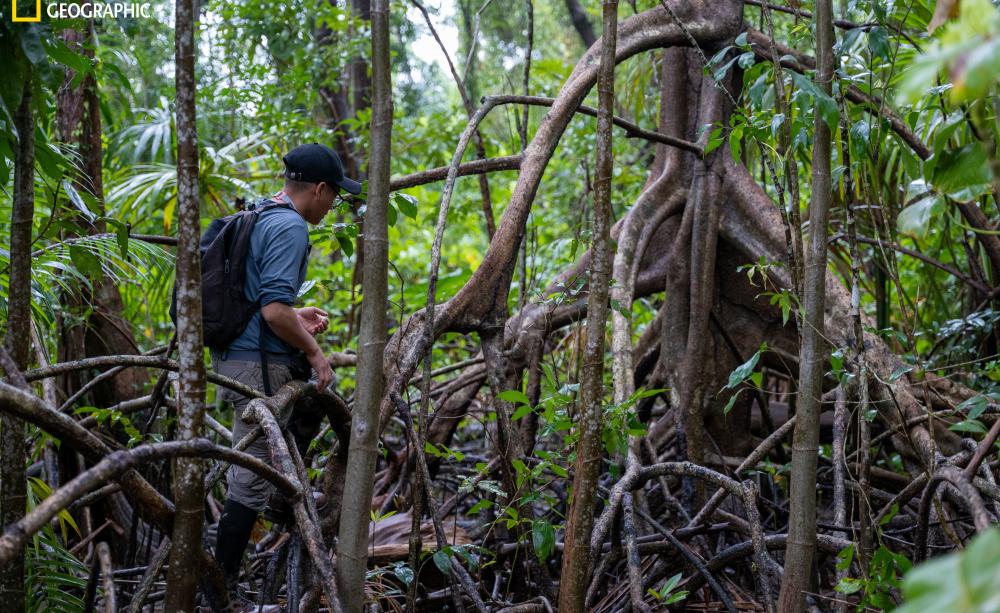 BRAZIL – Freshwater mangroves have been discovered in the Amazon Delta for the first time – suggesting ecosystem adaptability to the river flow. This study is the first scientific finding published as part of the National Geographic and Rolex Perpetual Planet Amazon Expedition, a two-year exploration of the Amazon River Basin from the Andes to the Atlantic. Angelo Bernardino and Thiago Silva, both National Geographic Explorers, conducted the first exploration of 11 mangrove forests along the Amazon Delta in April this year (2022). The Explorers analyzed data from the soil pore water, salinity, composition and tree density and volume using 3-D laser scanning from the ground and from drones. Their findings have been published in the journal, Current Biology. Bernardino, a marine ecologist, told The Ecologist: “It was fascinating. At first, I was confused because we were not seeing the same forests we are used to seeing all over Brazil. In the Amazon Delta, the forests have this unique mixture of freshwater plants.” BRAZIL – Freshwater mangroves have been discovered in the Amazon Delta for the first time – suggesting ecosystem adaptability to the river flow. This study is the first scientific finding published as part of the National Geographic and Rolex Perpetual Planet Amazon Expedition, a two-year exploration of the Amazon River Basin from the Andes to the Atlantic. Angelo Bernardino and Thiago Silva, both National Geographic Explorers, conducted the first exploration of 11 mangrove forests along the Amazon Delta in April this year (2022). The Explorers analyzed data from the soil pore water, salinity, composition and tree density and volume using 3-D laser scanning from the ground and from drones. Their findings have been published in the journal, Current Biology. Bernardino, a marine ecologist, told The Ecologist: “It was fascinating. At first, I was confused because we were not seeing the same forests we are used to seeing all over Brazil. In the Amazon Delta, the forests have this unique mixture of freshwater plants.”
MAP News Issue #552 – Aug 13, 2022Cayman Islanders & and Mangrove Rangers produce Mangrove Videos for Young and Old 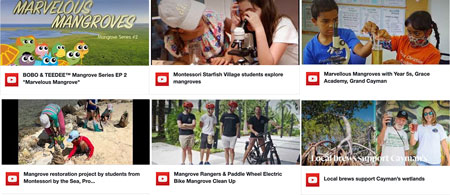 CAYMAN ISLANDS – The community of adults and youth in Cayman Islands has come together recently to release a series of educational videos. Each is geared towards presenting information about mangrove restoration in a light, educational way. From children’s stories to raising a cold beer that supports mangrove conservation efforts, Cayman Islanders are helping the world find new ways to celebrate the biodiversity in their back Yard. MAP’s education Director, Martin Keeley has been busy recently helping groups participate in clean-ups and better understand the importance of tropical forests in their own back yard. And the videos do more than educate. They are fun, affirming snippets of the lives of many environmentally conscious citizens of these Caribbean islands. We invite you to watch these short films and share them with your family and friends. The future of our planet just may rely on it! CAYMAN ISLANDS – The community of adults and youth in Cayman Islands has come together recently to release a series of educational videos. Each is geared towards presenting information about mangrove restoration in a light, educational way. From children’s stories to raising a cold beer that supports mangrove conservation efforts, Cayman Islanders are helping the world find new ways to celebrate the biodiversity in their back Yard. MAP’s education Director, Martin Keeley has been busy recently helping groups participate in clean-ups and better understand the importance of tropical forests in their own back yard. And the videos do more than educate. They are fun, affirming snippets of the lives of many environmentally conscious citizens of these Caribbean islands. We invite you to watch these short films and share them with your family and friends. The future of our planet just may rely on it!
MAP News Issue #555 – Sept 24, 2022Moon’s ‘wobbles’ mysteriously linked to mass mangrove tree deaths in Australia 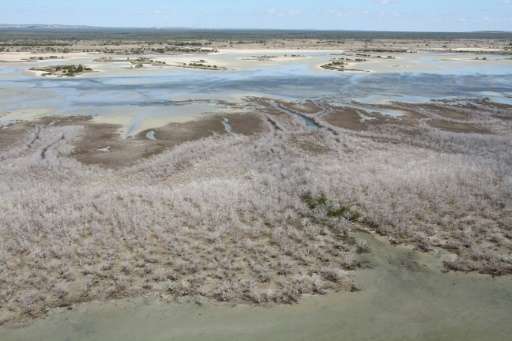 AUSTRALIA – A wobble in the moon’s orbit around Earth affects mangrove cover across Australia and likely contributed to mass tree deaths in the Gulf of Carpentaria, new research suggests. A study published in the journal Science Advances has found that an 18.61-year cycle known as the lunar nodal cycle shapes the condition of tidal wetlands. The moon’s orbit around Earth does not occur in a flat plane. “Since the 1720s, people have known that it moves up and down by a few degrees,” said the study’s lead author, Prof Neil Saintilan of Macquarie University. He likened the motion to “when you’re spinning a coin – as it loses momentum, it kind of wobbles”. Changes in gravitational pull as a result of this lunar wobble are known to affect the Earth’s tides. Previous research conducted by Nasa scientists has predicted that in the mid-2030s, the lunar wobble will amplify rising sea levels caused by climate change, resulting in high-tide floods along coastlines. MAP News Issue #556 – Oct 08, 202221st annual MAP’s Children’s International Art Calendars 2023 are here and ready to order! USA – Every year, MAP conducts and international children’s art contest among students from various mangrove countries, whose artwork is then featured in our MAP Children’s Calendar. With beautiful artwork submitted by students from many countries around the world, these calendars both make a great gift, and are a helpful reminder for what we can do to assist in saving our world’s mangroves. It is an opportunity for the younger generation to learn about the vital role Mangroves play in the lives of coastal communities and marine life around the world while letting them explore their imagination and have fun when creating their art pieces. This colorful calendar has increased in popularity since its first publication in 2002. The artworks entered were incredibly stunning and expressive and have resulted in one of our most beautiful calendars to date. MAP News Issue #558 – Nov 5, 2022Crocodile close-up in Cuba wins photo awards 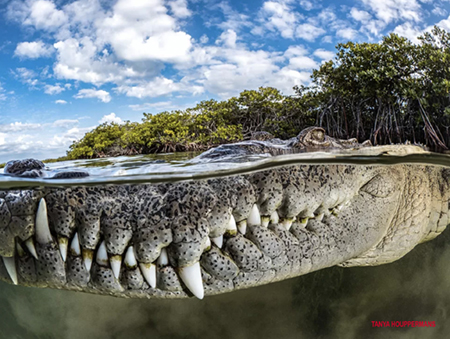 GLOBAL – Run by the Mangrove Action Project, the competition – now in its eighth year – aims to show the relationships between wildlife, coastal communities and mangrove forests, as well as the fragility of these unique ecosystems, both above and below the waterline. Gardens of the Queen is an archipelago off the coast of Cuba and has been strictly protected since 1996. It is one of the most untouched marine ecosystems in the world. “The healthy population of American crocodiles is down to the pristine condition of the mangroves, and I wanted to capture close-ups of this gentle giant in its natural habitat,” said Ms Houppermans. “I hope this image can illustrate that protecting areas like this is so critical.” Mangroves are an important protection against climate change, with one acre (4,000sq m) of mangrove forest absorbing nearly the same amount of carbon dioxide as an acre of Amazon rainforest. Pease consider donating to MAP to keep it going. *Articles in this newsletter may mention practices being used and/or show exagerated results being claimed without proof. Stories are presented here in effort to show mangrove related activity around the world and do not necessarily reflect Mangrove Action Project’s views or mangrove restoration best-practices. NOTICEChildrens Art Calendars 2023 ORDER YOURS HERE
ACTION ALERTSDON’T LET THE PACIFIC ISLANDS SINK!Climate change is drowning the Pacific Islands. Join the urgent call from the Prime Minister of Tuvalu and sign with your email address: CLICK HERE Do not sacrifice Congo’s rainforests to the oil industry! TAKE ACTION TAKE MAP SURVEY Please see the survey questionnaire we at MAP put together to discover where the shrimp industry is still having major adverse effects on mangroves and local communities. Stop the Dredging – 6.7 million cubic meters of sand from the Addu atoll basin will destroy nature, biodiversity and the natural defences and resilience of this UNESCO Biosphere Reserve. SIGN THE PETITION Keep fossil fuels out of Bangladesh for the health and wellbeing of the local communities, the beautiful regional beaches and forests, the Bangladeshi economy, and our shared climate. SIGN PETITION Stop this total madness Stop the biggest heated oil pipeline in the world — right through the heart of Africa! Like this newsletter? Pease consider donating to MAP to keep it going. Giving could never be easier MAP Website en Español 13 Year old Linda Li “Mangrove Adventure” from Kid Dream Art School
Video: Mangroves for the Future WANT TO GET INVOLVED?
Like this newsletter? Pease consider donating to MAP to keep it going. Giving could never be easier
Interested in connecting or working with MAP? Check out our opportunities here MANGROVE ISSUES Want to learn more about mangroves? What is CBEMR? Download MAP’s 2 page CBEMR Information Sheet containing links to all MAP’s CBEMR resources – CLICK HERE View MAP’s uploaded Videos at Question Your Shrimp Consumer/Markets Campaign! Mangroves: Guidebook to Malaysia – Click Here SHARE MAP’S VISION Our short documentary, Reducing the Risk of Disaster through Nature-Based Solutions : Mangroves NASA Study Maps the Roots of Global Mangrove Loss Marvellous Mangroves Curriculum The Marvellous Mangroves Curriculum begins with a simple philosophy – getting future generations to not only learn about, but understand the importance of mangrove forests. VISIT Marvellous Mangroves Curriculum in Bangladesh – WATCH VIDEO
Like this newsletter? Pease consider donating to MAP to keep it going. Giving could never be easier *Articles in this newsletter may mention practices being used and/or show exagerated results being claimed without proof. Stories are presented here in effort to show mangrove related activity around the world and do not necessarily reflect Mangrove Action Project’s views or mangrove restoration best-practices. | |
Mangrove Action Project Click here to view past newsletters
| |

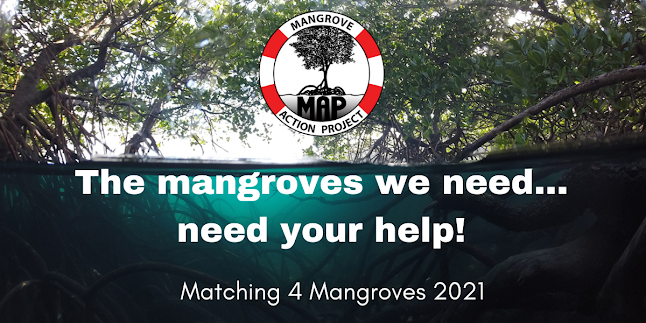 Maybe world leaders are finally reading the writing on the wall? Maybe they finally understand that the recent frightening weather, massive forest fires, droughts and floods are not just chance occurrences but due to our planet-level experiment of increasing CO2 levels from the pre-industrial 280ppm to 415ppm today. There’s no argument about these numbers or the greenhouse gas effect – it’s just straight physics. We can debate the link between CO2 levels and climate change. Or we can take practical action now. Please
Maybe world leaders are finally reading the writing on the wall? Maybe they finally understand that the recent frightening weather, massive forest fires, droughts and floods are not just chance occurrences but due to our planet-level experiment of increasing CO2 levels from the pre-industrial 280ppm to 415ppm today. There’s no argument about these numbers or the greenhouse gas effect – it’s just straight physics. We can debate the link between CO2 levels and climate change. Or we can take practical action now. Please 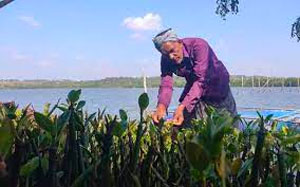 INDIA – Several varieties of mangroves, spread over vast tracts of land, have been cut down in Kannur in the recent years to facilitate Kaipad and shrimp farming. All through, 58-year-old Parayil Rajan, a resident of Thavam, near Pazhayangadi, has been fighting a lone battle against the trend. Besides creating awareness among the people, he is on a mission to cultivate mangroves, especially the varieties that have dwindled due to deforestation, in his nursery on the premises of his house. Rajan, a fisherman, has been planting mangroves right from his childhood, and their massive destruction of late has been disheartening to him. Mangroves are being cleared from private land for shrimp and Kaipad farming, for which huge funds are made available by various agencies, he said. “People have little concern for mangroves, which they now see as a hindrance to profit-making.
INDIA – Several varieties of mangroves, spread over vast tracts of land, have been cut down in Kannur in the recent years to facilitate Kaipad and shrimp farming. All through, 58-year-old Parayil Rajan, a resident of Thavam, near Pazhayangadi, has been fighting a lone battle against the trend. Besides creating awareness among the people, he is on a mission to cultivate mangroves, especially the varieties that have dwindled due to deforestation, in his nursery on the premises of his house. Rajan, a fisherman, has been planting mangroves right from his childhood, and their massive destruction of late has been disheartening to him. Mangroves are being cleared from private land for shrimp and Kaipad farming, for which huge funds are made available by various agencies, he said. “People have little concern for mangroves, which they now see as a hindrance to profit-making. 